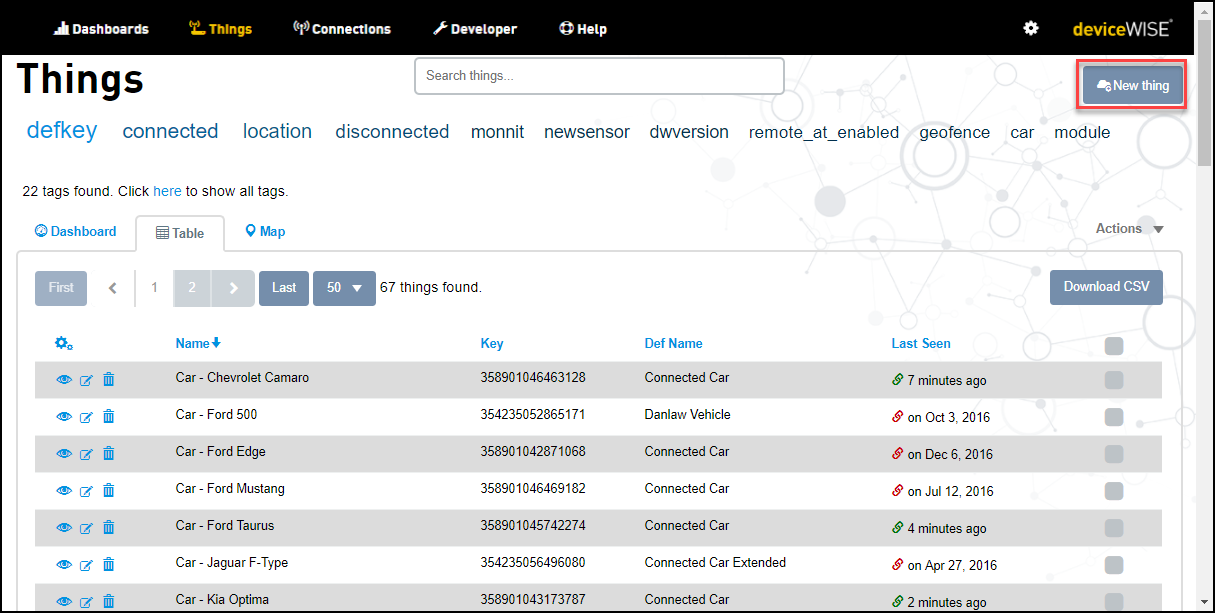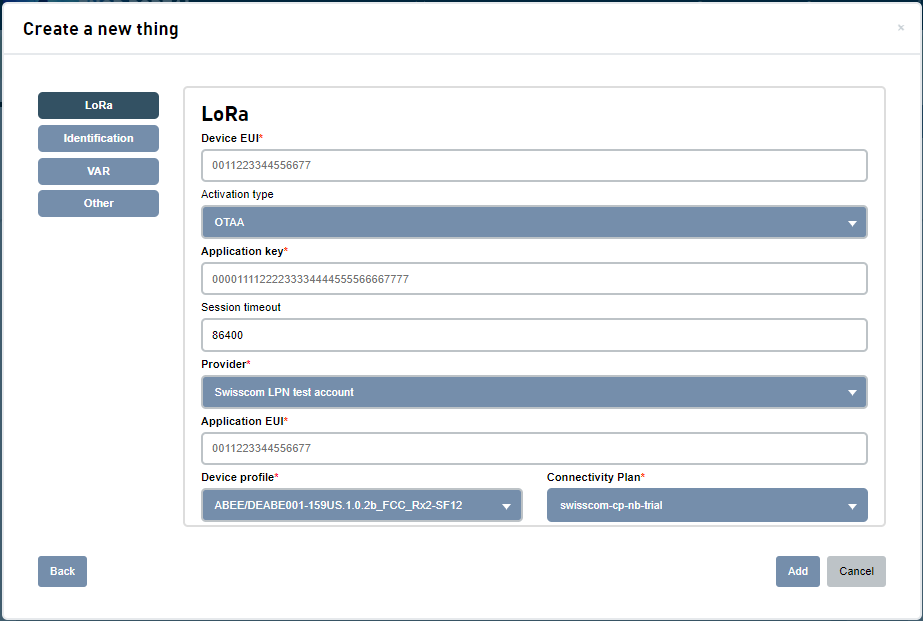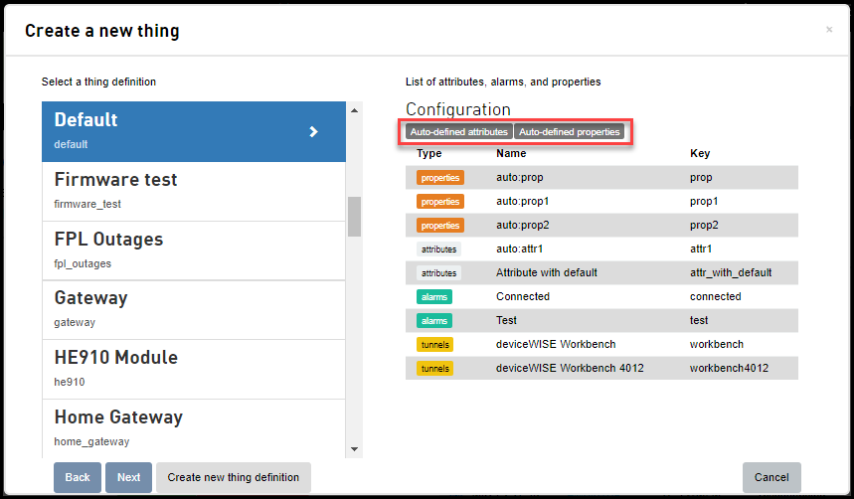To create an LoRaWan thing, do the following:
- On the Things main screen, click on New thing

Create a new thing screen appears - Click on the LoRaWAN thing

A screen with a list of Thing definition appears - Do one of the following
- Click Create new thing definition. For more information on creating thing definition, see Creating a Thing definition
- Click Next
Create a new thing screen appears - Under LoRa
- Enter the Device EUI. The Device EUI is a 64-bit LoRa device identifier. It is supplied by the device manufacturer.
- Click the Activation type drop-down and select a Activation type. OTAA (Over-the-Air Activation) is the preferred way to securely connect with the device.

- Enter the Application key. The Application key is the shared secret key unique to your device to generate the session keys that prove its identity to the network
- Session timeout is the number of seconds provided for the LoRa device to get created. By default it is 86400 seconds.
- Click the Provider drop-down and select a Provider.
- When you choose provider, the Application EUI appears . The Application EUI is a 64-bit unique identifier. Each application in LoRaWAN is allocated an Application EUI.
- Click the Device Profile drop-down and select the device profile. For more information on Device profile, see Device Profiles.
- Click the Connectivity Plan drop-down and select a Connectivity Plan.
- Click Identification
- Key - An ASCII unique
identifier that must be globally unique within
the organization. The key for the thing. A key
is an identifier that must be globally unique
within the organization. Use one of the
hardware identifiers, such as an IMEI, ICCID,
MAC address, and so on.
For more information on Thing Key formats and limitations, see Field Formats and Limitations. - Name - Enter the name of the Thing.
- Identifier - For Things that are connections, you specify a mobile identifier from the identifier drop-down. The options include ICCID (Integrated Circuit Card Identifier) or ESN (Electronic Serial Number), IMEI, MEID or IMSI. This enables the M2M Service to Connect Device Provisioning systems (CDPs) to retrieve provisioning information and data usage from telecommunications carriers.
To add more than one identifier click on the plus sign adjacent to the New identifier - Tags - Tags are used to filter the display of Things. Select any of the existing tags, or enter new tags. For more information on tags, see Using Tags
- Security tags - Security tags are used to limit view access or update access to things. Select any of the existing tags, or enter new tags. For more information on Security tags, see Using Security Tags.
- Control tags - Control tags are used to control the behavior of the Things. For more information on Control tags, see Using Control Tags
- Key - An ASCII unique
identifier that must be globally unique within
the organization. The key for the thing. A key
is an identifier that must be globally unique
within the organization. Use one of the
hardware identifiers, such as an IMEI, ICCID,
MAC address, and so on.
- Click VAR
- Click Billing plan code drop-down and select a Billing plan code. For more information on the Billing plan code, see Billing plans
- Click VAS package code drop-down and select a VAS package code. For more information on the VAS package code, see VAS packages
- Click Other
- Enter an optional description of the thing in the Description field
- Selecting the Location enabled check box enables the location related features for the thing.
- Enter the IP address to reach this thing from the gateway in the Tunnel actual host field. The Actual host is the IP address of the endpoint.
- Enter the IP address assigned to it when tunnel gets opened locally in the Tunnel virtual host field. The virtual host is the IP address of the local host on which the tunnel manager listens for active connections
- Click SMS
provider drop-down and select an SMS provider.
- Click Add
